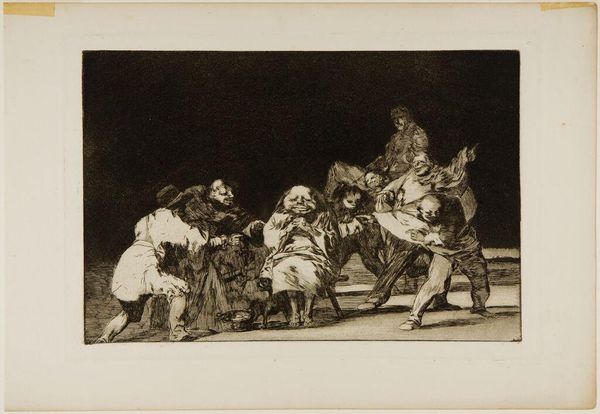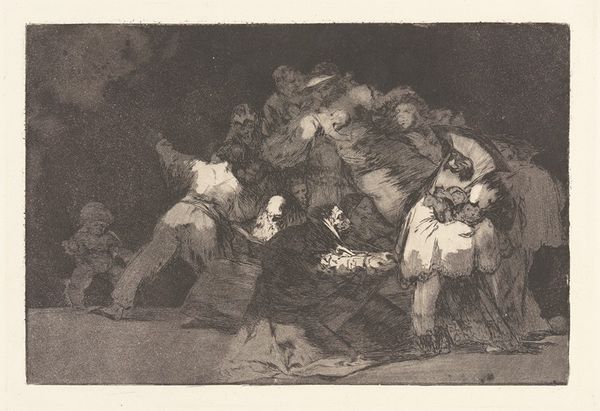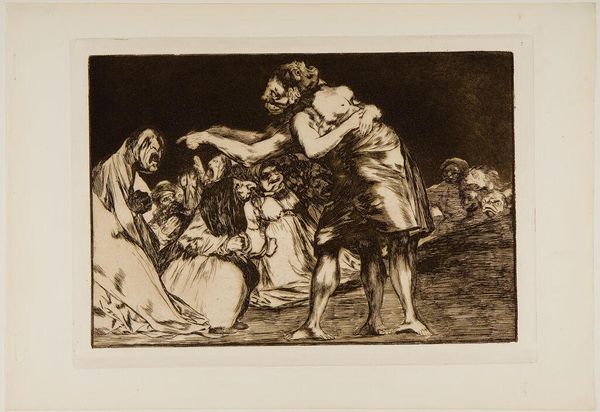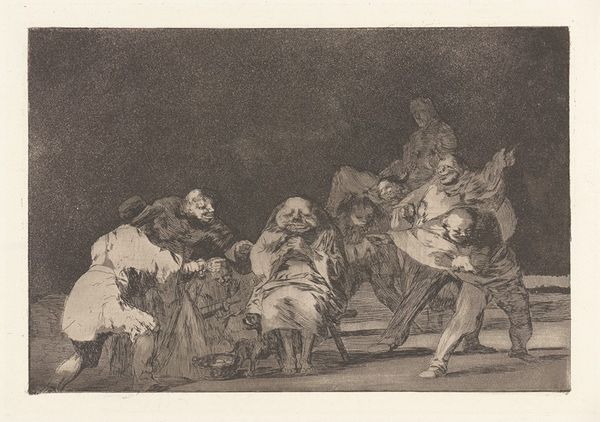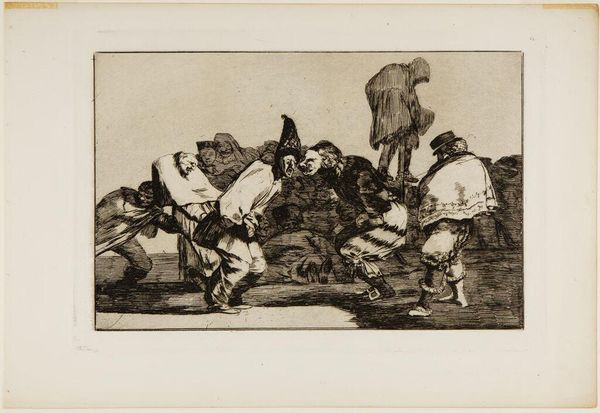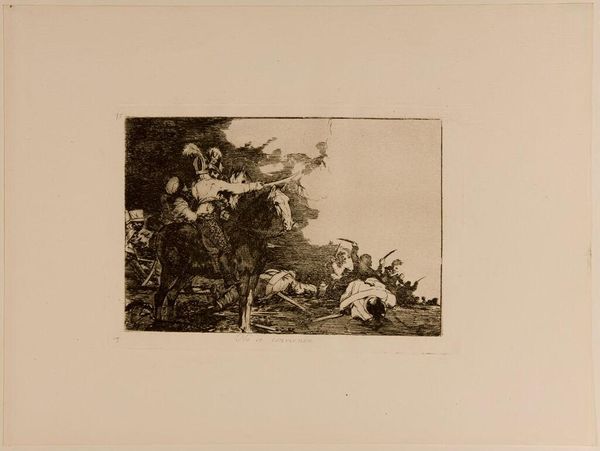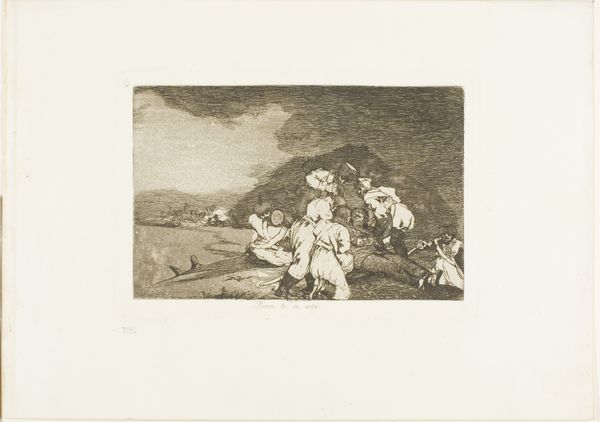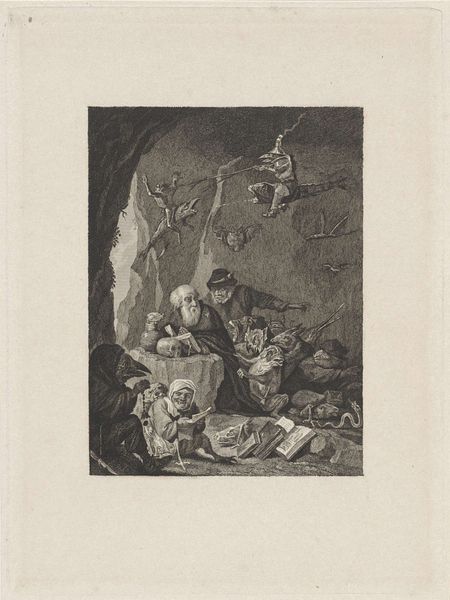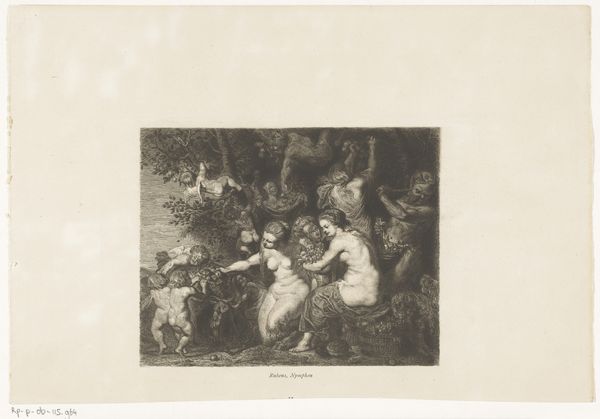
The Claws of a Cat and the Dress of a Devotee - Similar to Vice is Often Clothed in Virtue's Habit: General Folly 18th-19th century
0:00
0:00
Copyright: CC0 1.0
Editor: This print by Goya, titled "The Claws of a Cat and the Dress of a Devotee," has such a haunting, almost nightmarish quality. All the figures seem caught in some kind of frenzy. What do you see in this piece? Curator: I'm drawn to the physical process. Etching allowed Goya to mass-produce these images, making them available to a wider audience, disseminating his critique of societal hypocrisy. Consider the labor involved in creating the plate, the materials consumed. Editor: That's fascinating! So, you're saying the medium itself is part of the message? Curator: Precisely. The act of printing, of reproducing this scene of "General Folly," implicates the viewer in its consumption and continuation. What does that say about our relationship to vice and virtue? Editor: I hadn't thought about it that way, how the production informs the meaning. It adds another layer of unease to the already unsettling scene. Curator: Indeed. It's not just a depiction; it's a manufactured commentary, reproduced and consumed.
Comments
No comments
Be the first to comment and join the conversation on the ultimate creative platform.
